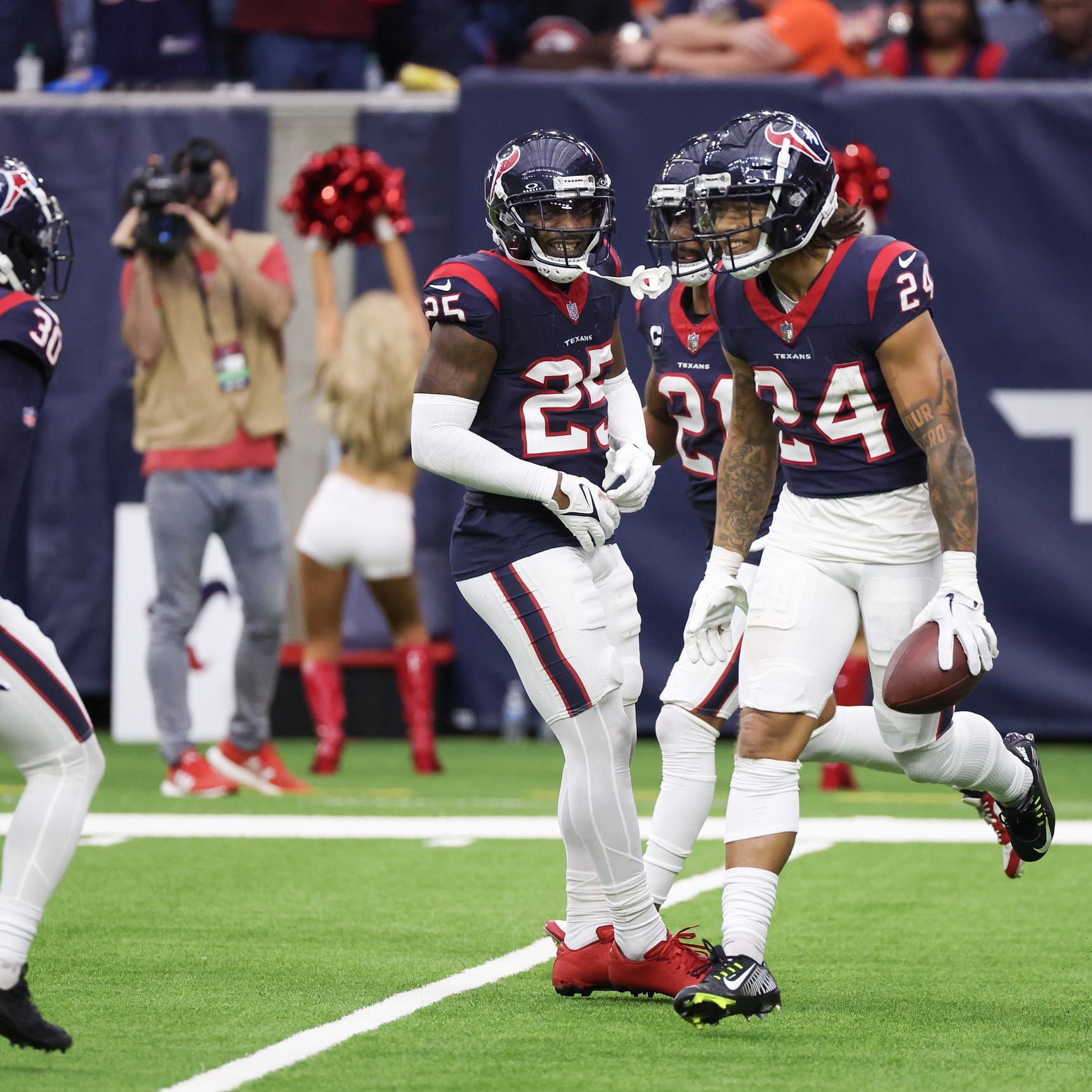This article is part of our According to the Data series.
Is pairing your QB with his WR a good idea?
I've been playing a whole lot of daily fantasy lately because I think it's really the wave of the future in the industry. Daily fantasy is all about assessing individual matchups, but a lot of the principles can be applied to season-long leagues. One of those is known as "stacking."
In the world of daily fantasy sports, stacking is when you pair your quarterback with one or more of his wide receivers (or tight ends). This is done for a few reasons, the most important of which is that it increases your team's ceiling. When your receiver scores, you get 10 points just for the touchdown (in four-point passing TD leagues). Daily fantasy owners typically stack their teams in tournaments where upside is required. What's the point of fielding a team that can consistently finish in the top 25 percent, but not better, if you get paid only for a top-10 percent finish?
The downside of stacking is a reduced floor. If your quarterback has a lousy game, chances are your receiver will as well. Thus, the purpose of stacking is to create a dependent relationship in your lineup through which you can increase your team's ceiling at the expense of possibly tanking in any given week.
Stacking in Season-Long Leagues
Drafts are over, but most of you are in leagues in which you can and do trade players. Should you consider stacking your lineup? There are a variety of
Is pairing your QB with his WR a good idea?
I've been playing a whole lot of daily fantasy lately because I think it's really the wave of the future in the industry. Daily fantasy is all about assessing individual matchups, but a lot of the principles can be applied to season-long leagues. One of those is known as "stacking."
In the world of daily fantasy sports, stacking is when you pair your quarterback with one or more of his wide receivers (or tight ends). This is done for a few reasons, the most important of which is that it increases your team's ceiling. When your receiver scores, you get 10 points just for the touchdown (in four-point passing TD leagues). Daily fantasy owners typically stack their teams in tournaments where upside is required. What's the point of fielding a team that can consistently finish in the top 25 percent, but not better, if you get paid only for a top-10 percent finish?
The downside of stacking is a reduced floor. If your quarterback has a lousy game, chances are your receiver will as well. Thus, the purpose of stacking is to create a dependent relationship in your lineup through which you can increase your team's ceiling at the expense of possibly tanking in any given week.
Stacking in Season-Long Leagues
Drafts are over, but most of you are in leagues in which you can and do trade players. Should you consider stacking your lineup? There are a variety of factors at play, the most important of which is your playoff/payout structure.
•Traditional Playoffs
If you're in a traditional league with heads-up matchups and a classic playoff structure, I don't think stacking is for you. The reason is you really don't want that much week-to-week volatility (something stacking can create). You don't only want to maximize your projected points in such leagues, but you also want to perform at a high level on a consistent basis.
Let's say the average team scores 130 points in your league in any given week. Now let's say I can guarantee you an average of 140 points per game by the end of the year. Do you take it?
If you know nothing about the week-to-week distribution of those points, then of course you should take it. But there can be a mighty big difference between an average of 140 points for one team and another.
Namely, a team that averages 140 points because it had a few monster weeks might not even be a playoff team in a head-to-head structure. What if the team in question scored 210 points in three straight games? Awesome! Except in a 13-week regular season, that leaves an average of just 119 points in the remaining games. Such a high-volatility squad would be guaranteed three wins, but might win only 25 percent of the other matchups, missing the playoffs.
Meanwhile, a lineup that can consistently score 10 points above the league mean is almost always going to make the playoffs in a head-to-head structure. Safety pays in most leagues.
•Total Points Champion
Some leagues award the grand prize, or at least part of the prize, to the total points champion. The leagues I run do that because I think it's much more likely the best team wins (and since I always have the best team, it makes sense, right?).
In such leagues, it pays to take more risks. No matter how good you are at fantasy football, you're probably an underdog to win the championship if you're looking at it from a "you vs. the field" sort of standpoint. And when you're talking about a winner-takes-all points title, it really is you versus the field.
If you're in a 10-team league, the typical owner will have around a 10 percent chance to win the league. Even if you're head-and-shoulders above the rest of your league members, you're still probably no better than around 25 percent to win the whole thing, i.e. you start an underdog, and when heads-up matches don't hold as much weight, you need a high-volatility strategy. In those types of leagues, stacking can be very valuable.
•Altering Your Lineup at Midseason
Let's say you're in a traditional head-to-head league in which you don't necessarily want to maximize your ceiling at all costs, but you've started 0-3. Guess what? You're a heavy underdog to take home the crown, regardless of your skills. You need volatility and you needed it yesterday. It could be in your best interest to trade some guys in an effort to pair your quarterback with his receiver(s) to increase your team's upside.
On the flip side, you've successfully paired your quarterback and receiver and gotten off to a hot start at 3-0. You're now a big favorite to make the playoffs, so you want to take a more conservative route to ensure you make the playoffs. It might be time to move either your quarterback or receiver in an effort to increase your team's floor.
Ultimately, stacking has lots of value in season-long leagues, but you need to use it wisely. When you need upside, such as in winner-takes-all total points leagues or when you've started cold, stacking can be your savior. But in traditional heads-up leagues and those in which you've begun the season on fire, your goal should be increasing your team's floor through lineup diversification.
Jonathan Bales is the author of the Fantasy Football for Smart People book series. He also runs the "Running the Numbers" blog at DallasCowboys.com and writes for the New York Times.










